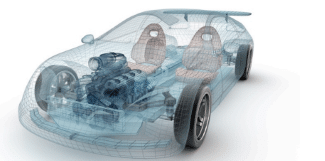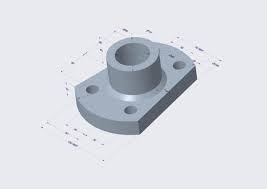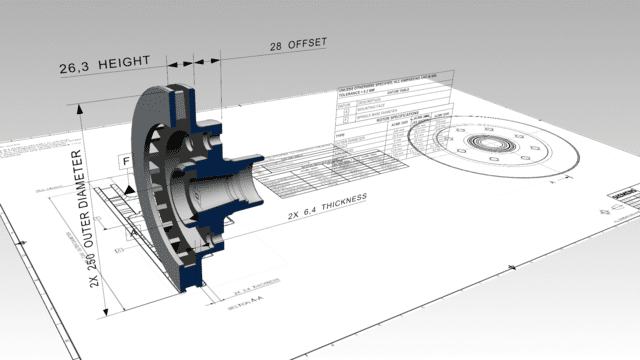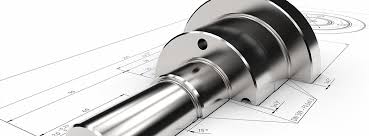Today’s business environment is complex, dynamic, and intricately interdependent and challenges traditional approaches’ limits. Product development is becoming ever-more complex and dynamic. Conventional engineering practices, processes, tools, and mindsets need to evolve not only to address this complexity but to capitalize on it.
Model-Based Definition is an emerging approach to engineering that holds great promise for addressing the increasing complexity of systems while reducing the time, cost, and risk to develop and deliver these systems.

Model-Based Definition (MBD) is about creating rich “Technical Data Packages (TDP),” which includes 3D models and associated data elements that fully define the product in a manner that can be communicated and used effectively by all downstream customers without the need for 2D drawings. This TDP becomes the single source of truth exchanged with the downstream organizations such as quality, inspection, manufacturing, procurement, and others to interrogate, analyze, build and inspect the product.
In contrast, a Model-Based Enterprise (MBE) is a fully integrated and collaborative environment that shares the validated and authorized MBD data across the enterprise that enables the realization of products from concept through sustainment.
What is Model-Based Definition (MBD)?
- MBD is ABOUT empowering all stakeholders within the organization to access rich Digital Product Definition not only Just-In-Time but also Just-What-They-Need
- MBD is ABOUT creating, organizing, and managing fully defined a 3D Model that captures design intent and serves as the Master Product Definition for the extended Enterprise
- MBD is ABOUT creating TDP that encapsulates various facets of the design for use by manufacturing, inspection, service, marketing, suppliers, and other downstream users.
What Model-Based Definition (MBD) is NOT!
- Model-Based Definition is NOT Paperless Engineering! MBD is a broader initiative that impacts engineering, manufacturing, quality, inspection, procurement, and downstream chain partners.
- Model-Based Definition is NOT just about passing “Models” from one domain or tool to another. MBD provides a rich, single source of truth that all can use, regardless of their job function.
What’s the problem with 2D Drawings?
Historically, engineering processes have been centered around 2D drawings. Drawings are the master records and have been the primary product definition deliverables for countless years. Most Engineering, Manufacturing, and other downstream users have relied on a physical or a digital representation of 2D drawing to convey form & fit information that’s required to drive manufacturing processes. With the advances in technology and the ongoing business challenges to shorten product development cycles, 2D drawings fall short in several ways.

A trusted Model-Based Definition is a prerequisite for achieving ModelBased Enterprise. Although the concept of MBD has been around for years, it has undoubtedly met its share of challenges along the way.
Now, it seems that many of the hurdles that were once considered stumbling blocks for the adoption of MBD are quickly dissolving. With advances in technology and standards, we are now at a point where MBD will increasingly become the preferred way of design in the immediate future.
Key business drivers for an MBD approach and its resultant MBE are:
- Faster – through Increasing Velocity of Product Realization
- Smarter – leverage Digital Information to Automate the Process
- Better – through Improving both Model and Product Quality
- Cheaper – by Enabling Cost-Effective Downstream Processes.
Simplify Complexity. Eliminate inaccuracies. Reduce errors.
2D drawings are more prone to interpretation errors resulting in design non-conformances and data inaccuracies.
The MBD methodology reduces rework and errors introduced in the process. Take the example of communicating the split line in a complex plastic part. This line can be represented using 25 or more views on an A0 sheet. Even with these many views, it’s tough to imagine how this line “splits up” the model.
Reduce costs. Improve product quality.
What’s on the 2D drawing is as important as what’s left off the 2D drawing.
Downstream organizations stand to gain the most from MBD data. The ability for downstream users who “touch” a 2D drawing by opening a 3D model for that drawing allows them to interrogate the design more efficiently. The current process is for the designer to front-load the drawing with the information that explains his/her rationale. When it gets over to inspection, the inspection engineers have to duplicate and recreate that same information, and hence errors are introduced. With MBD data, the information contained in the 3D model can be automatically pulled into a First Article Inspection (FAI) or to program a CMM machine. This reduces time and effort and hence costs.
Credit source:https://www.ptc.com/en/resources/cad/ebook/model-based-definition-reusing-3d-models


